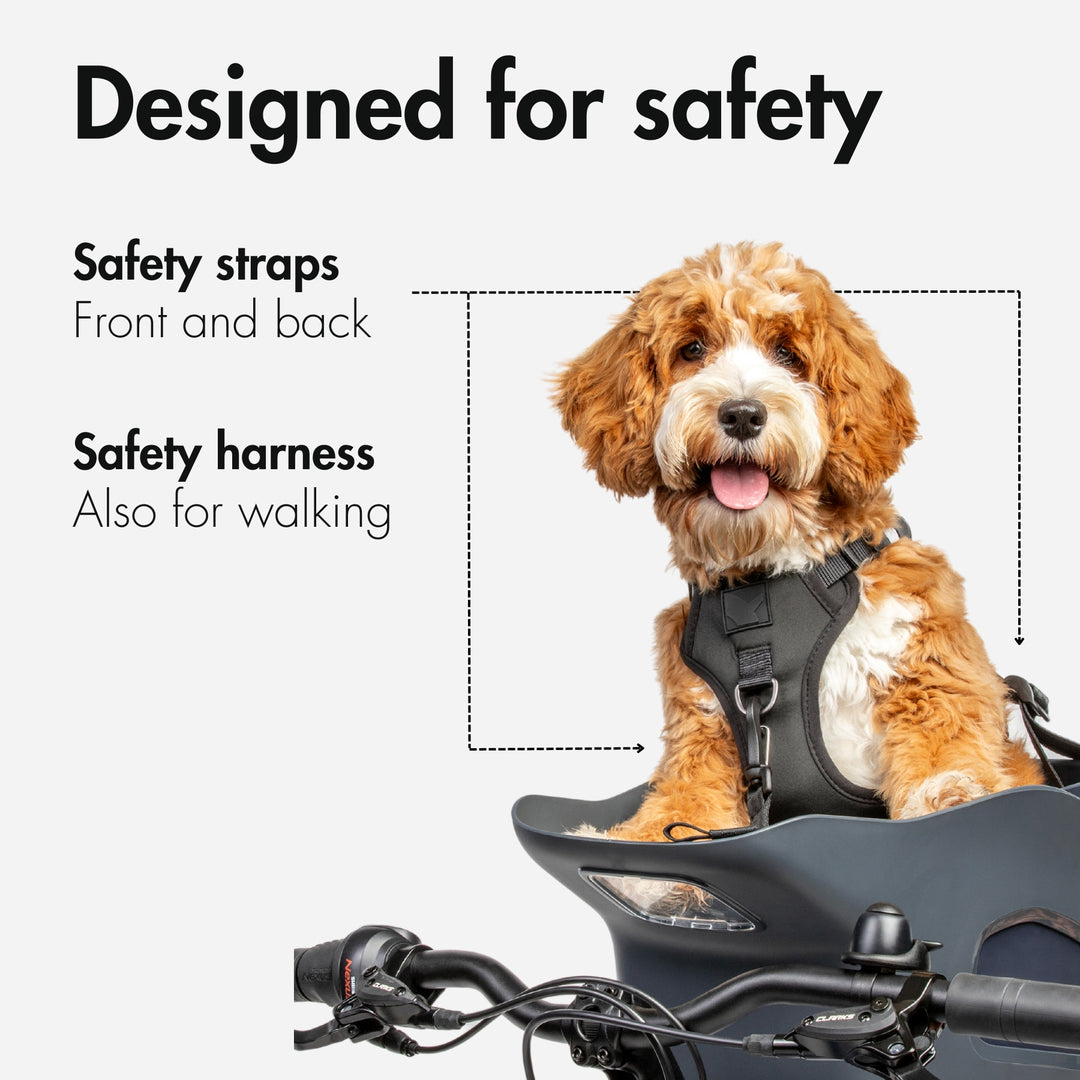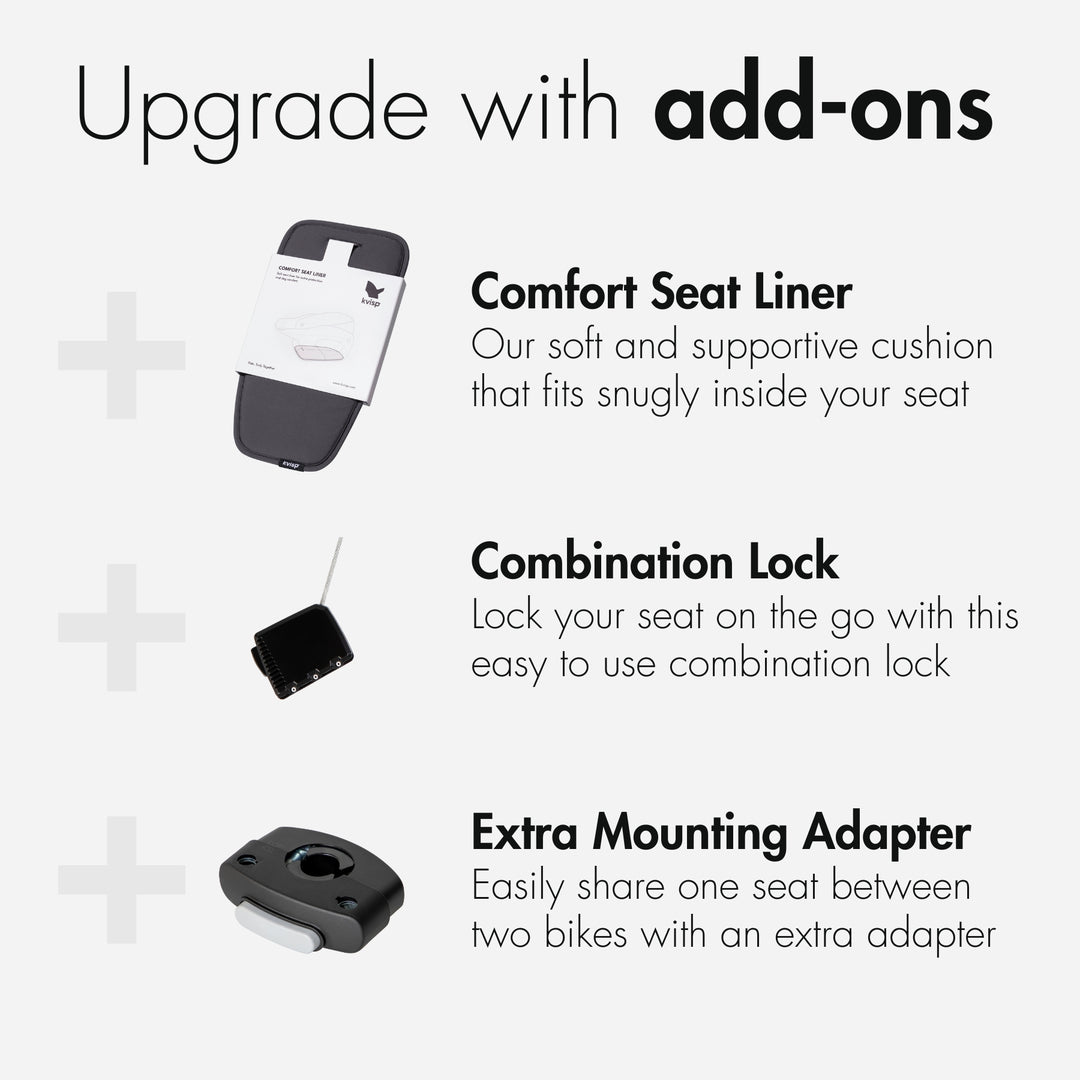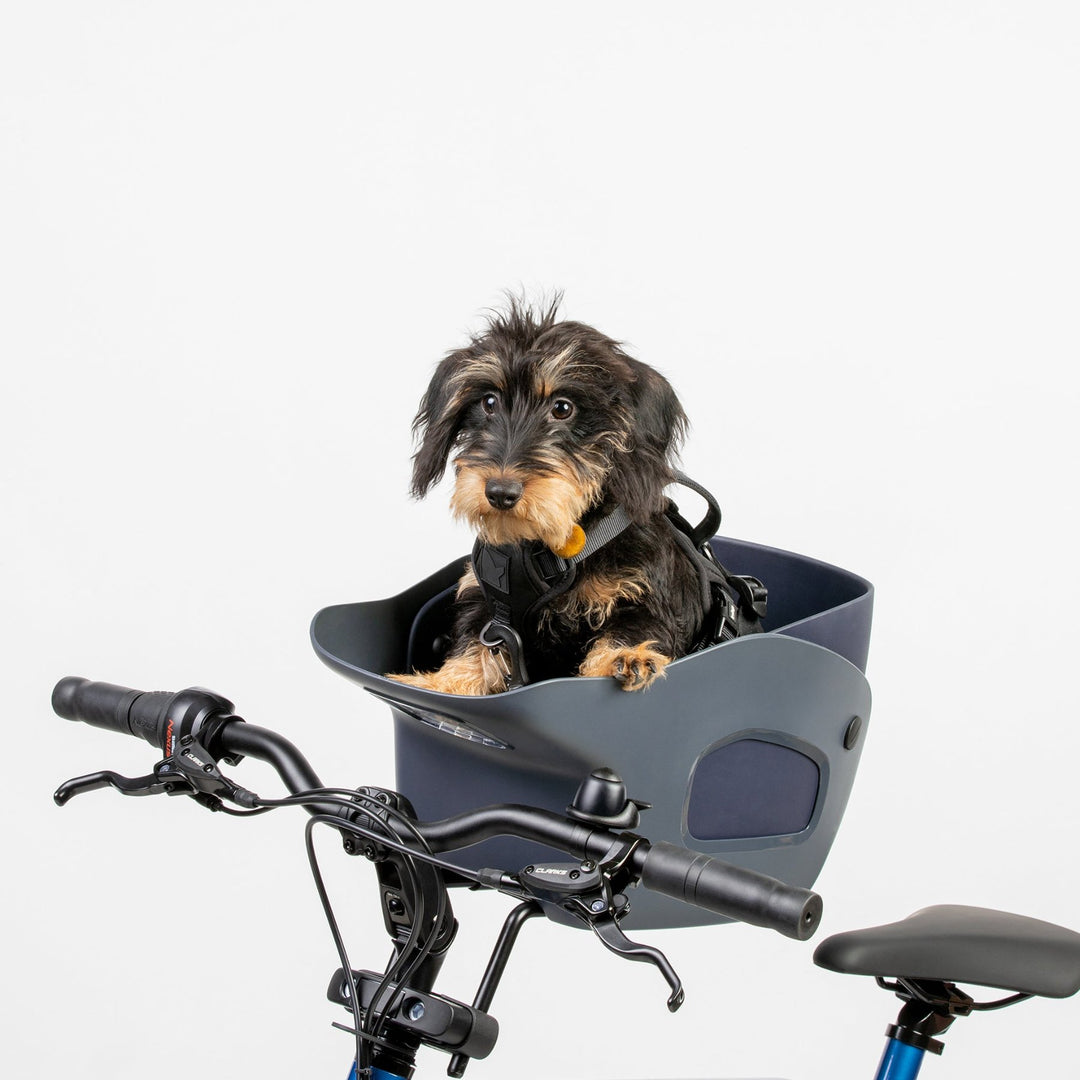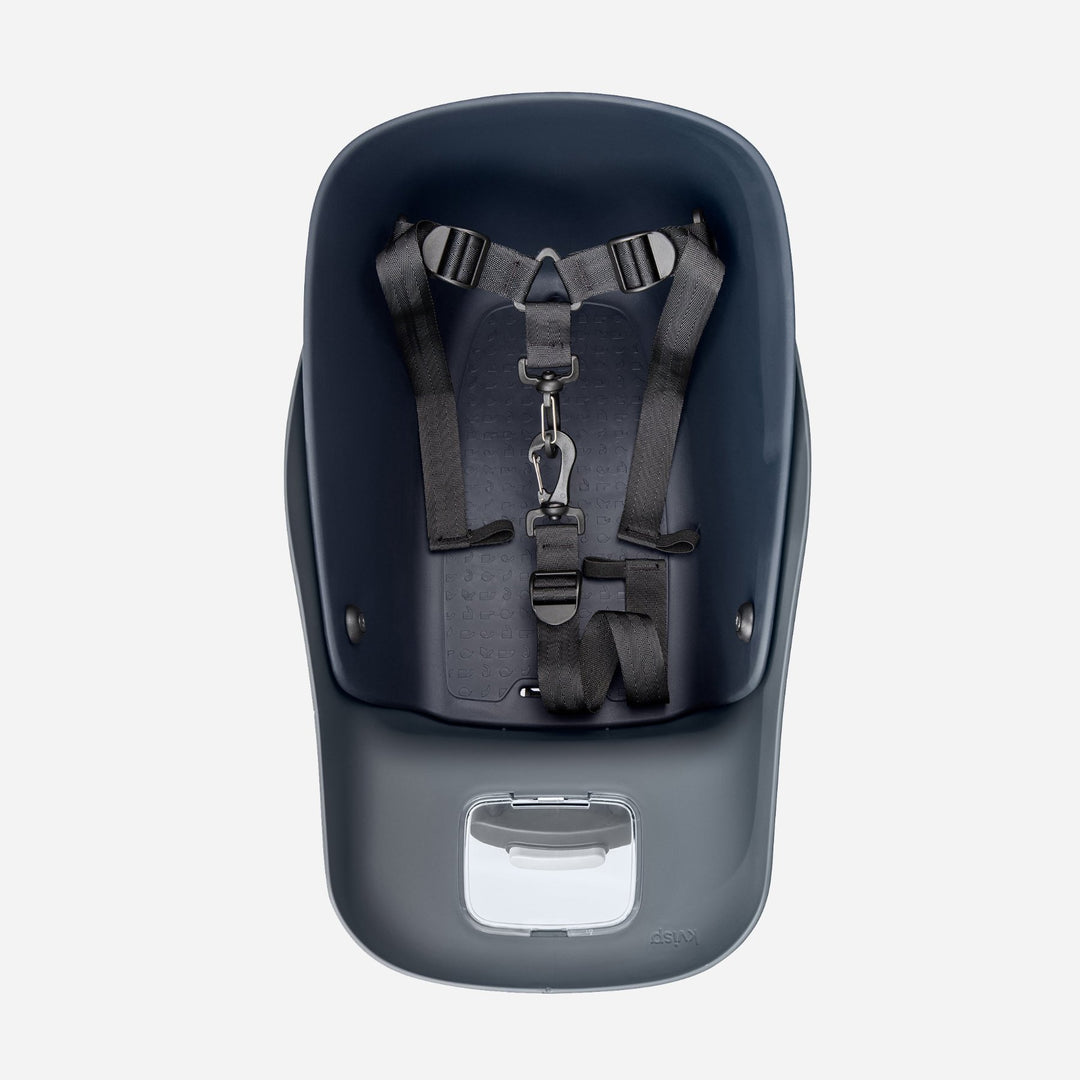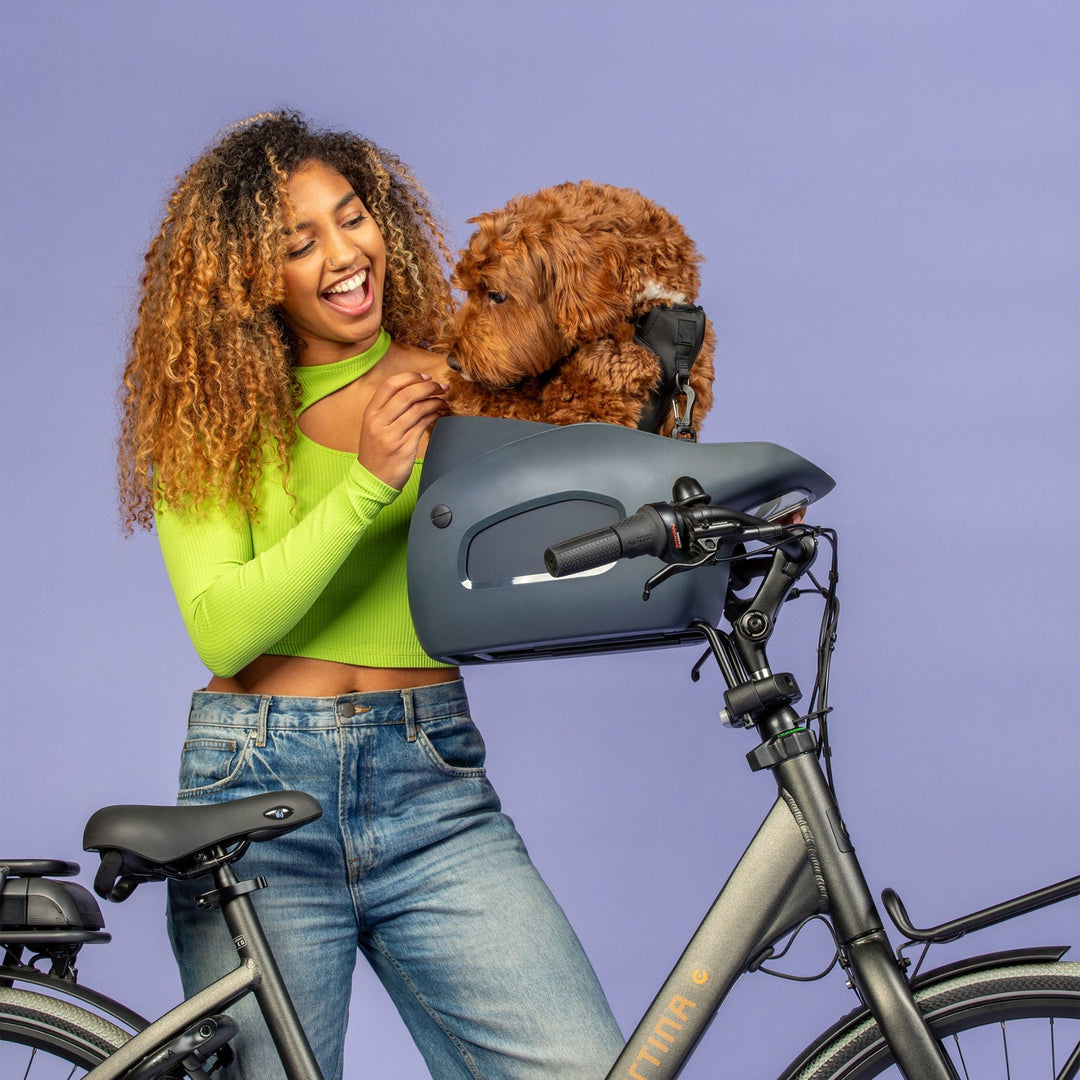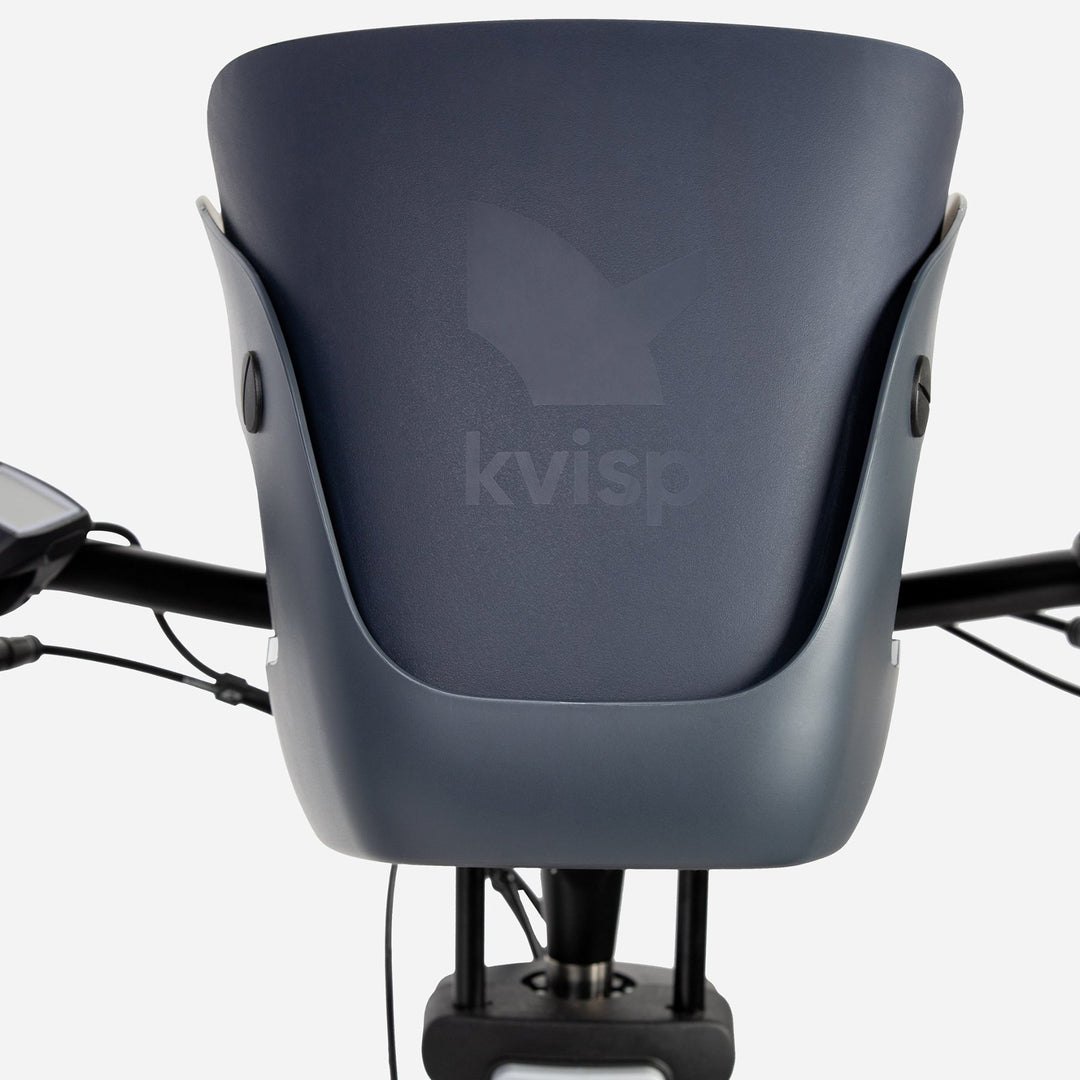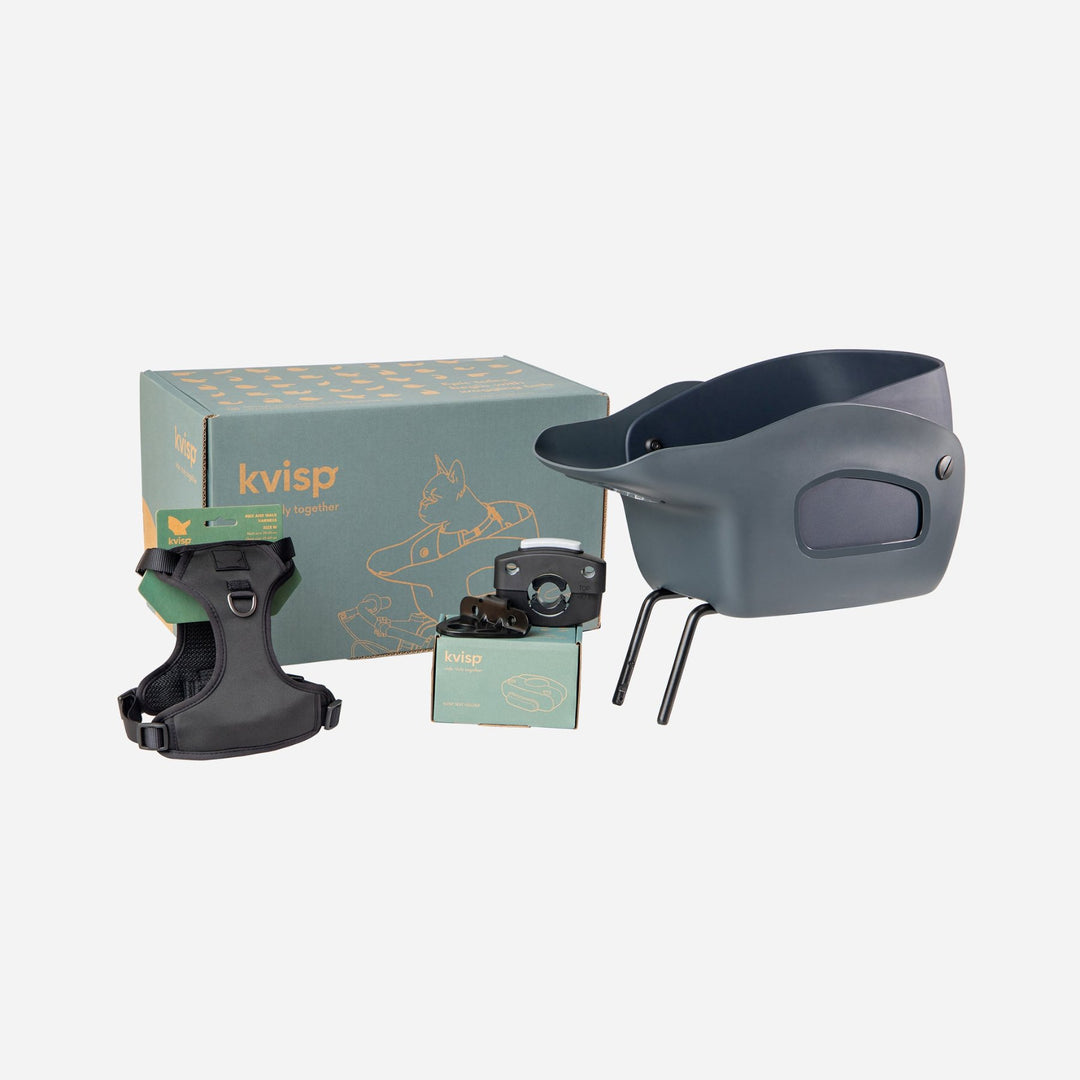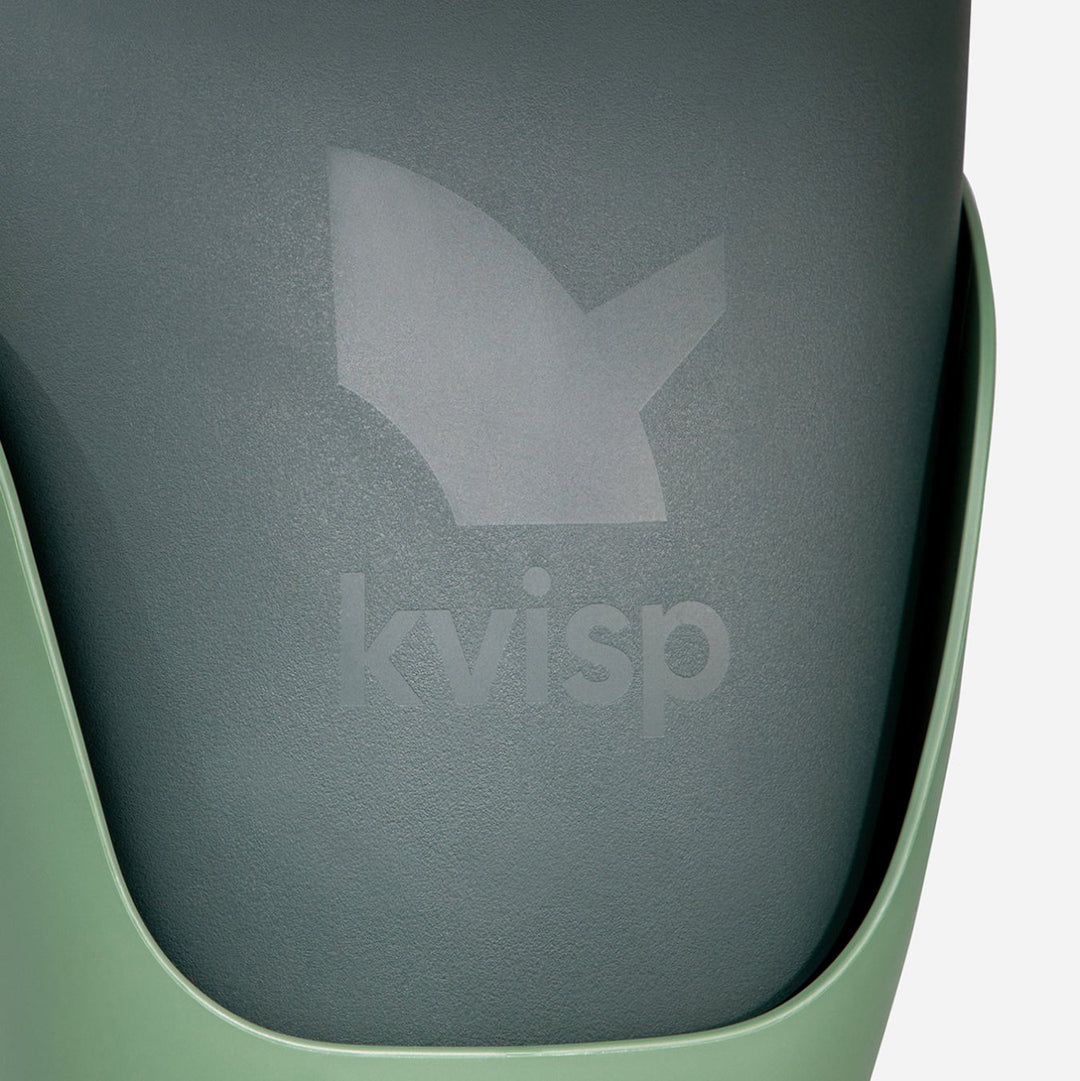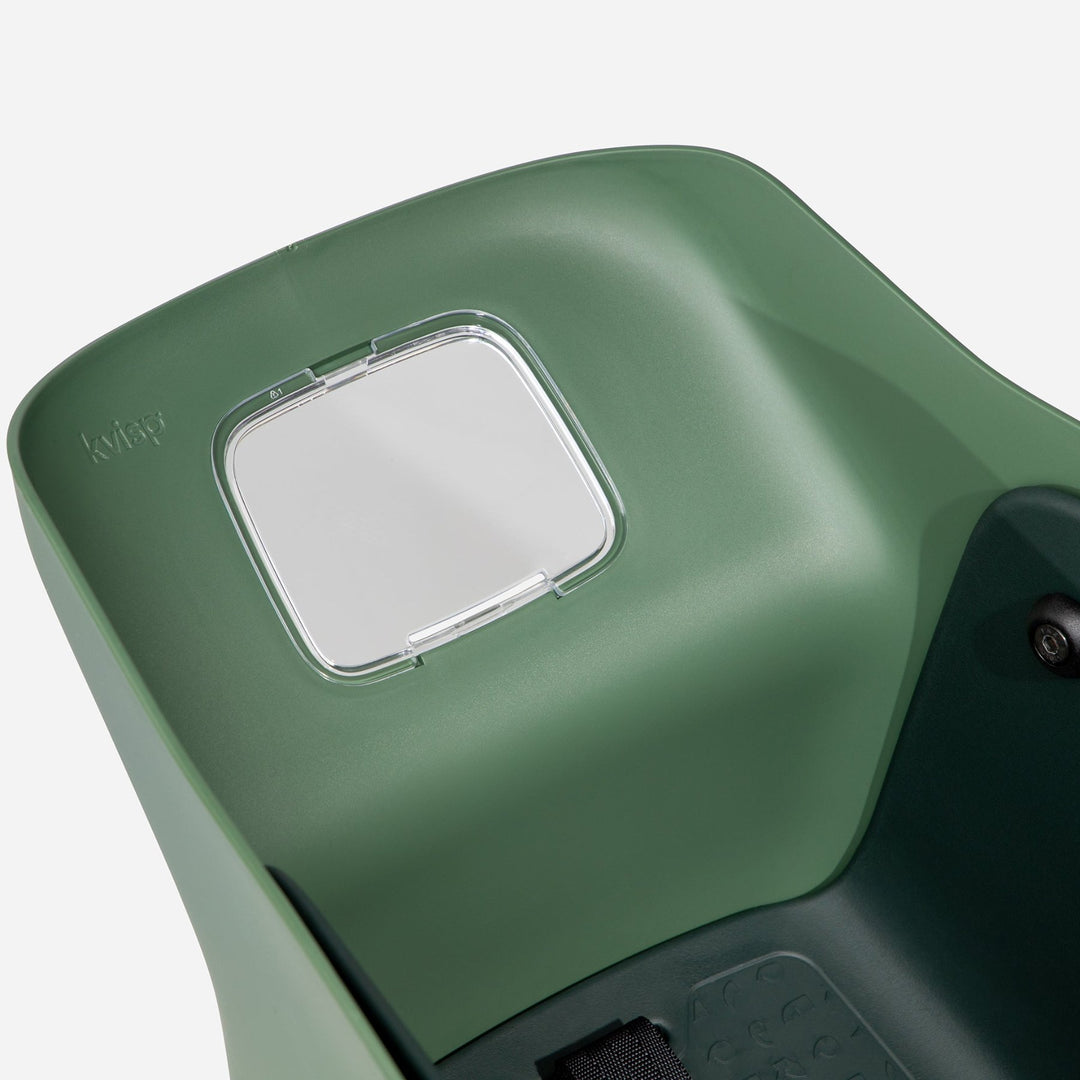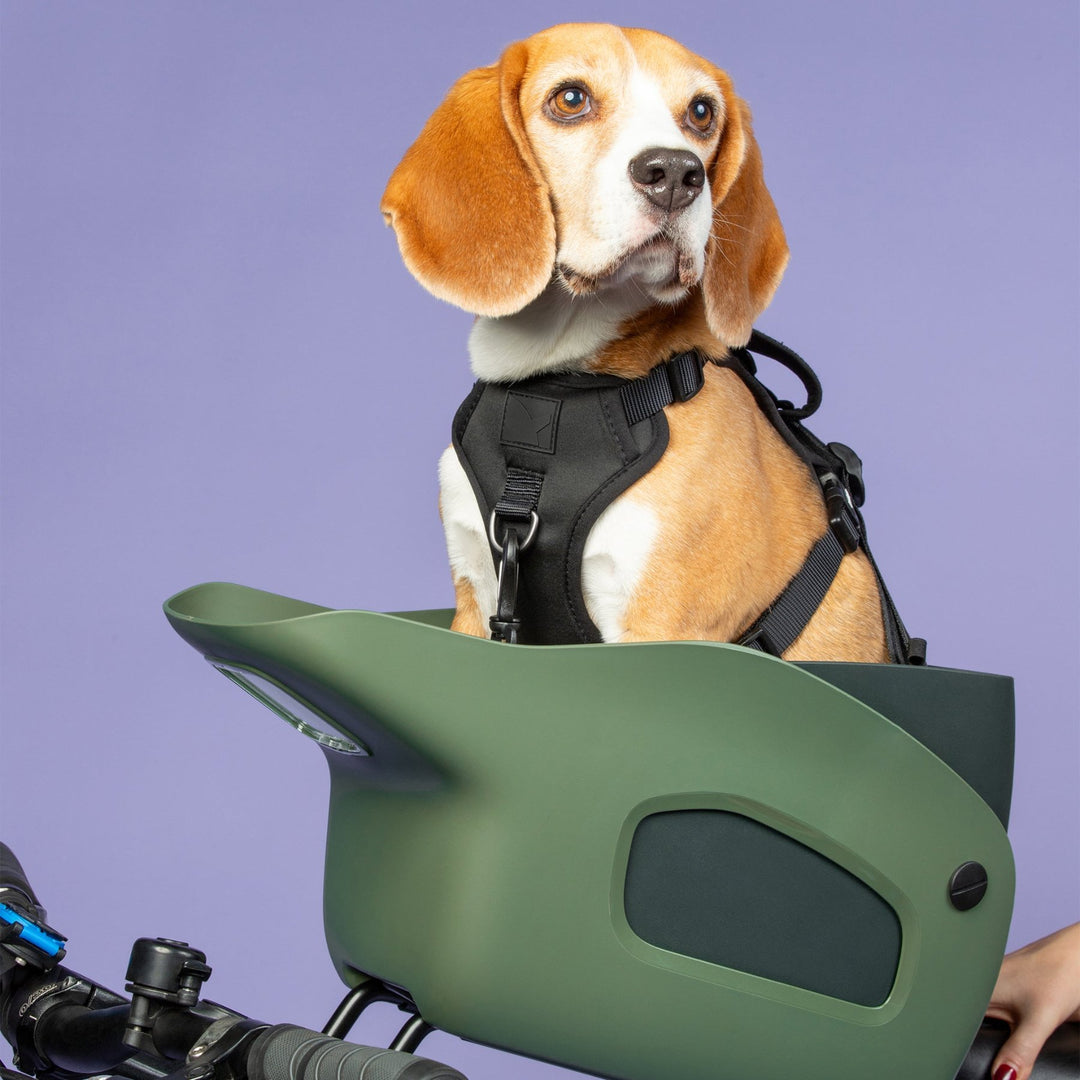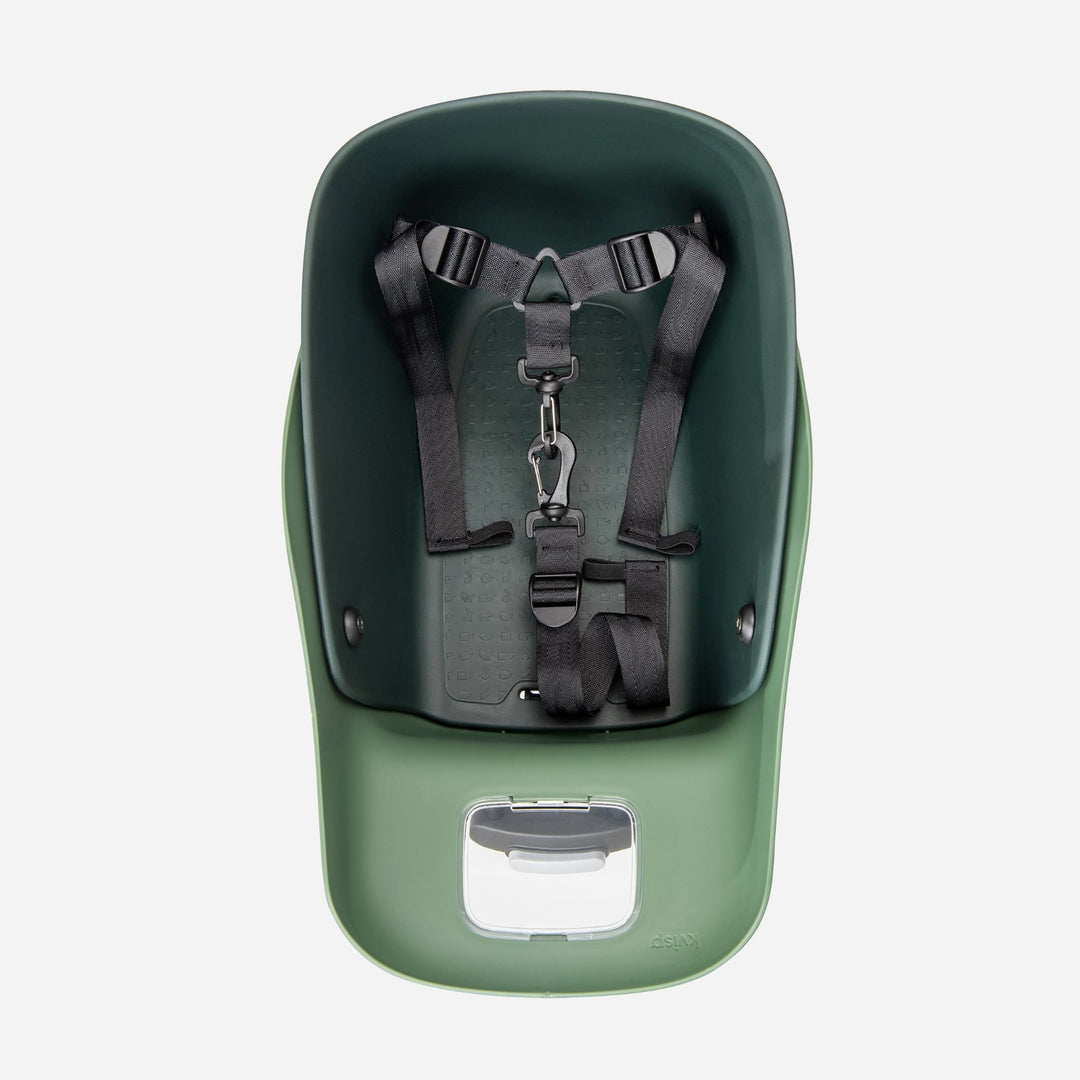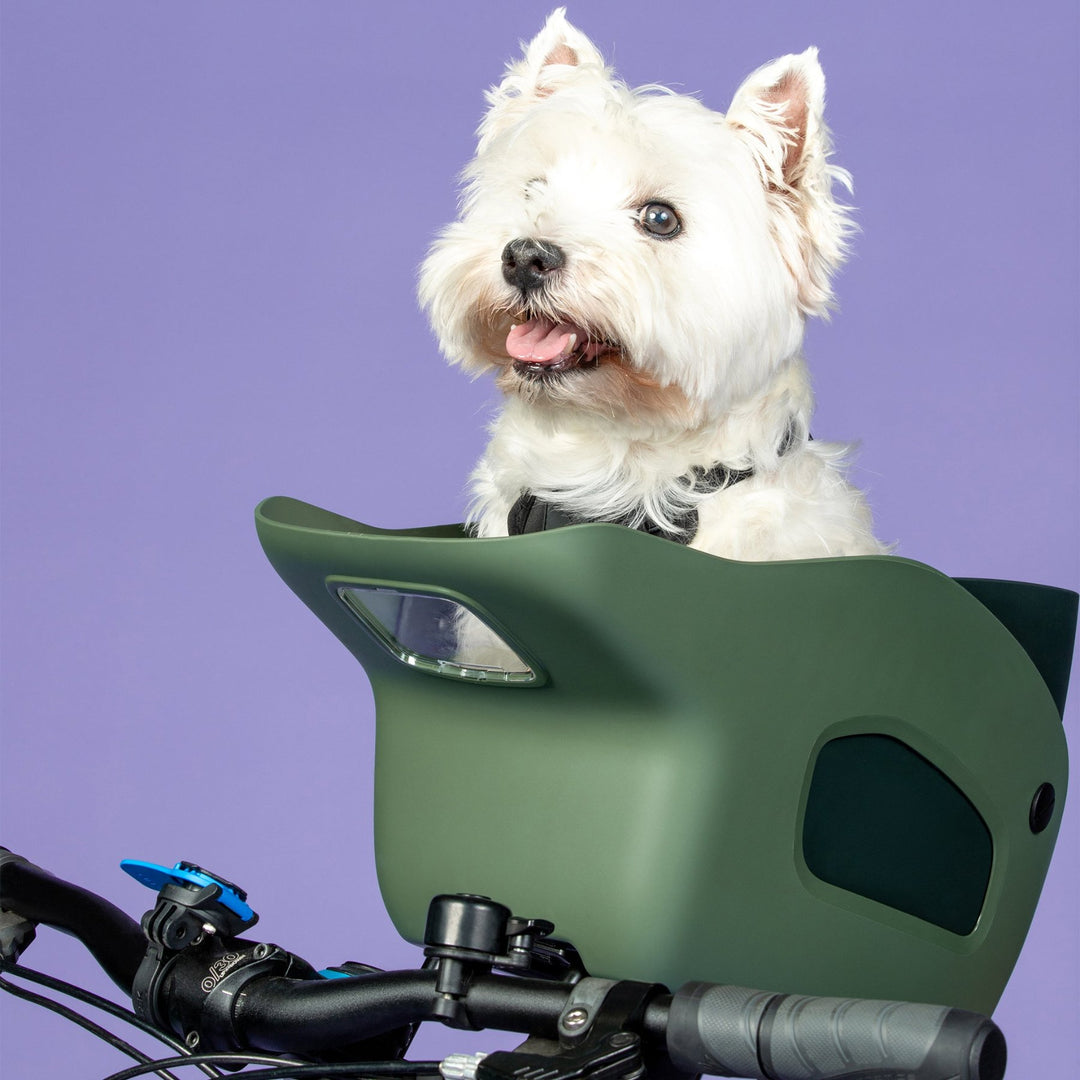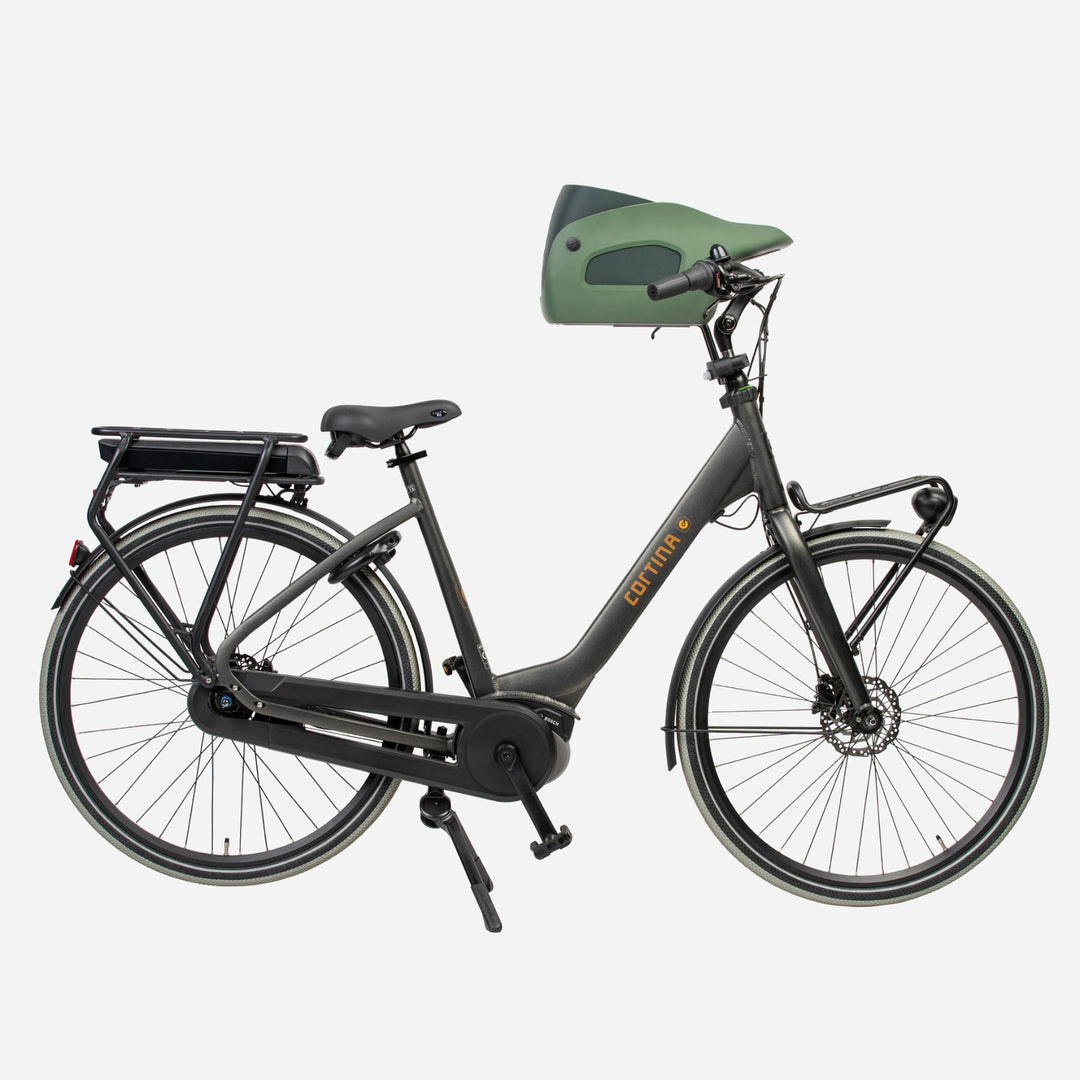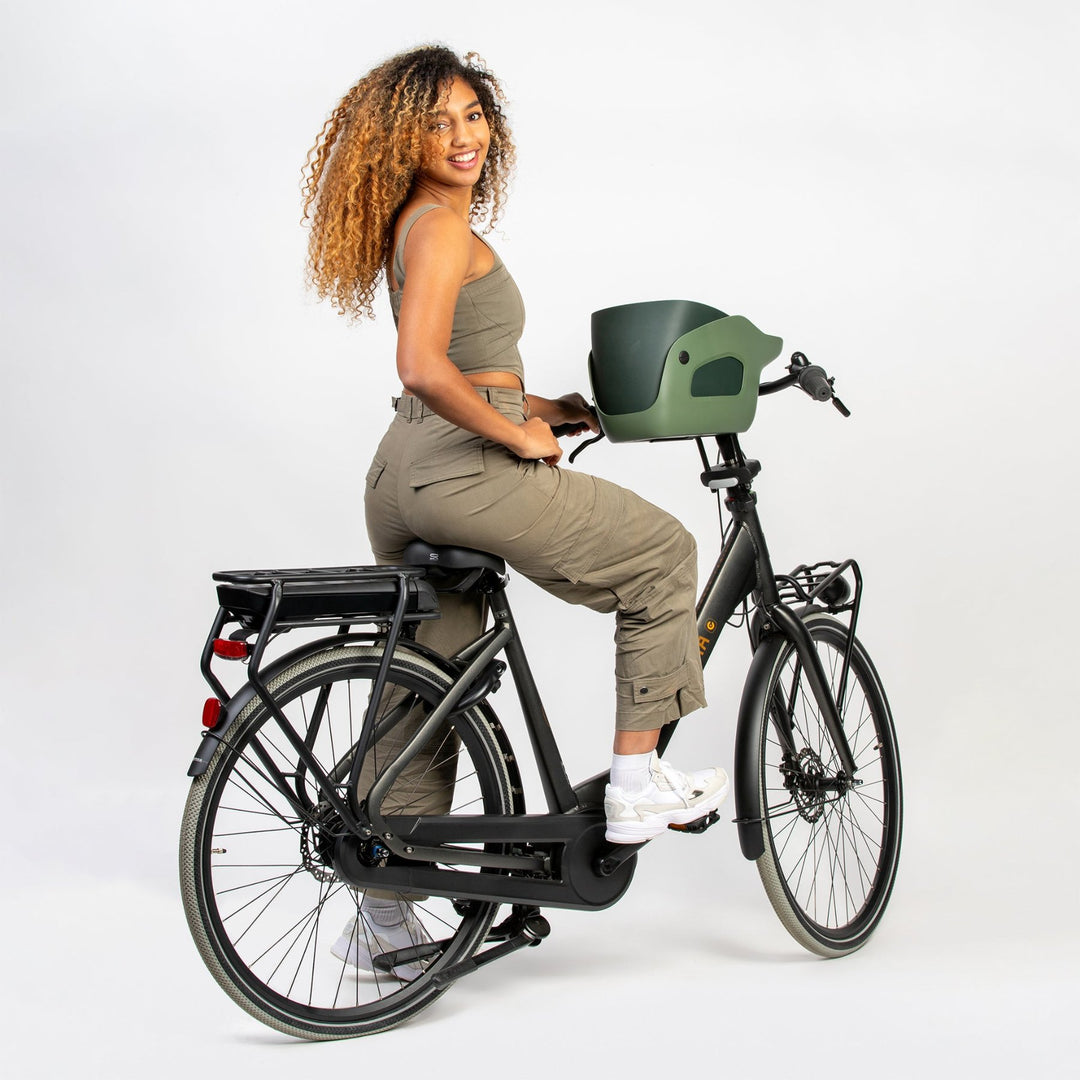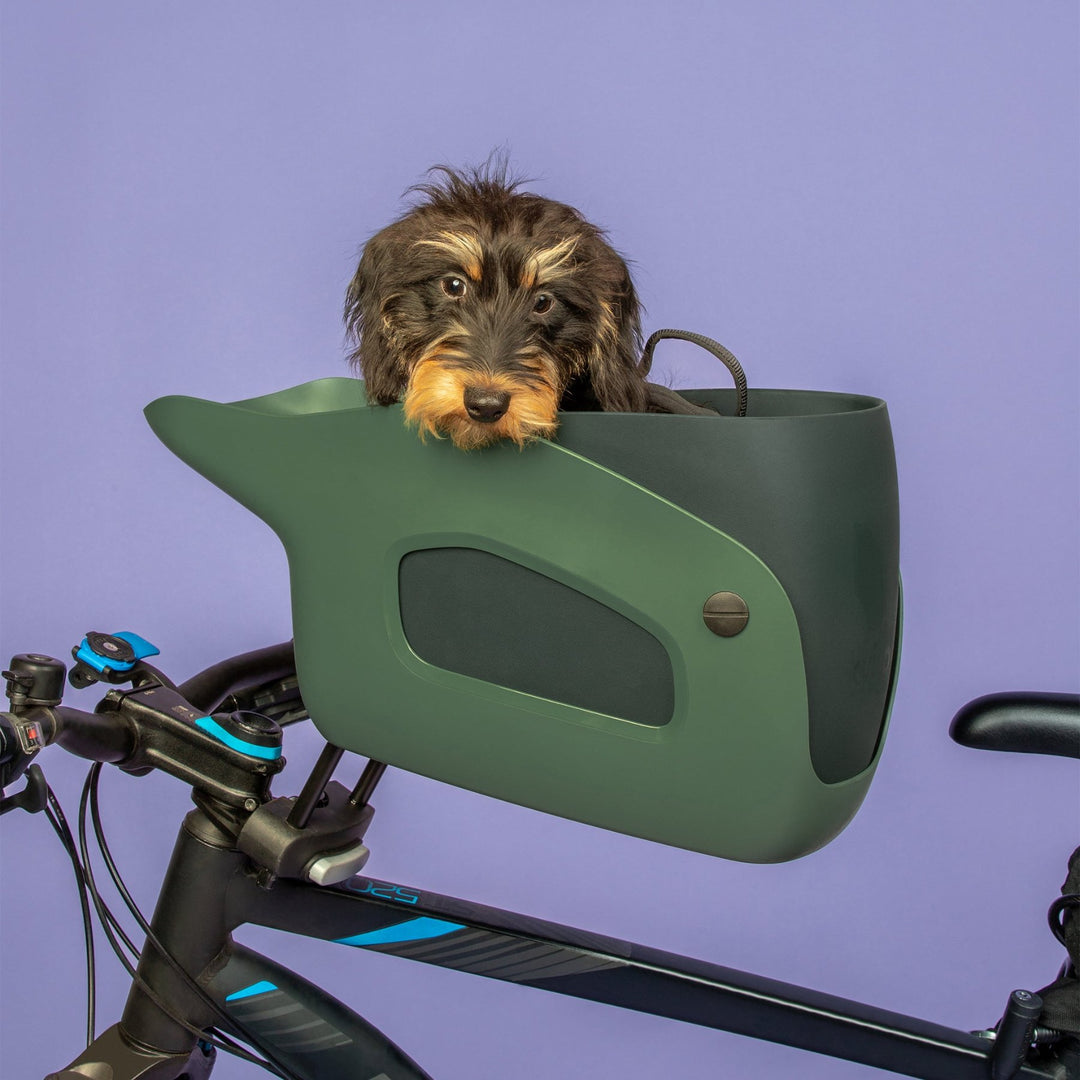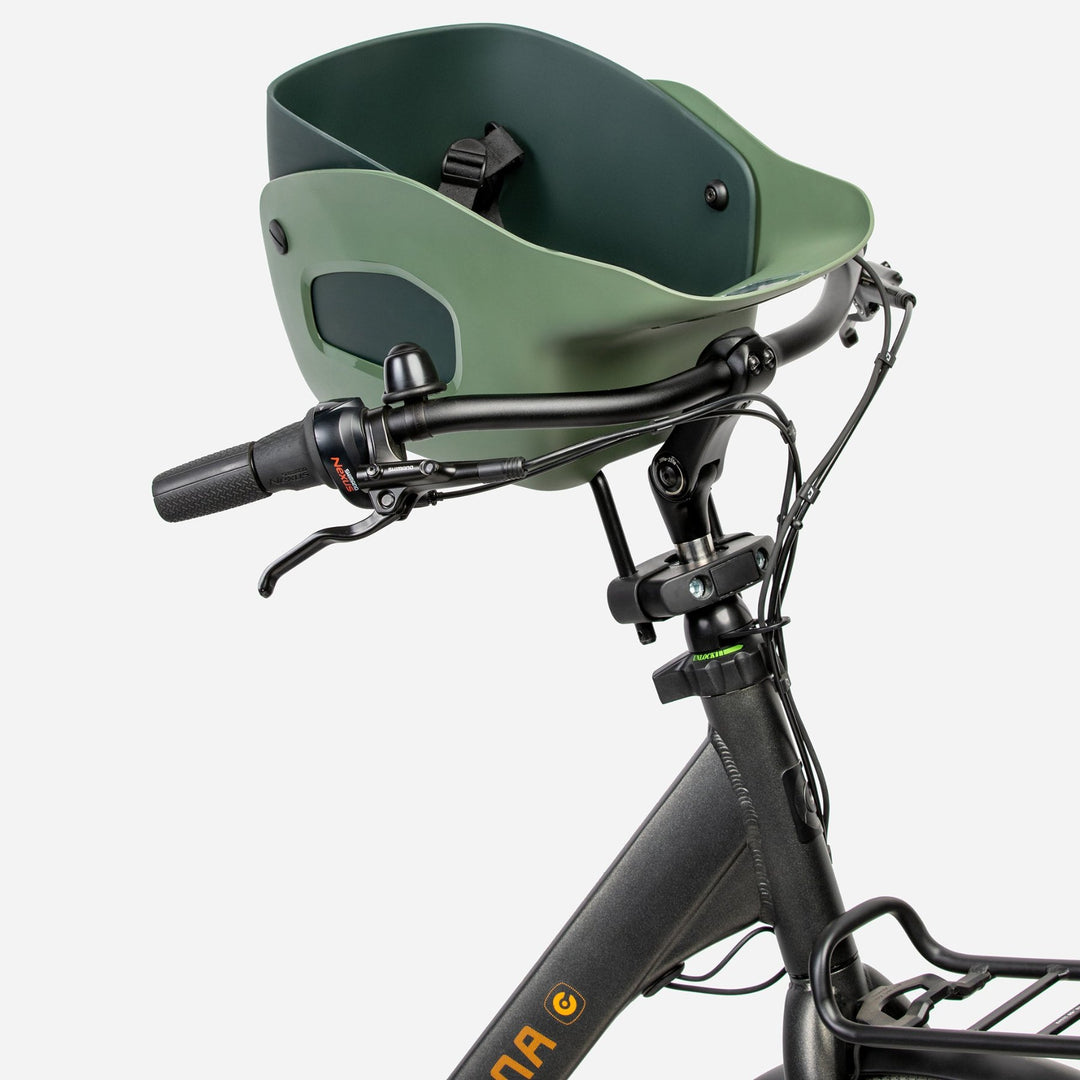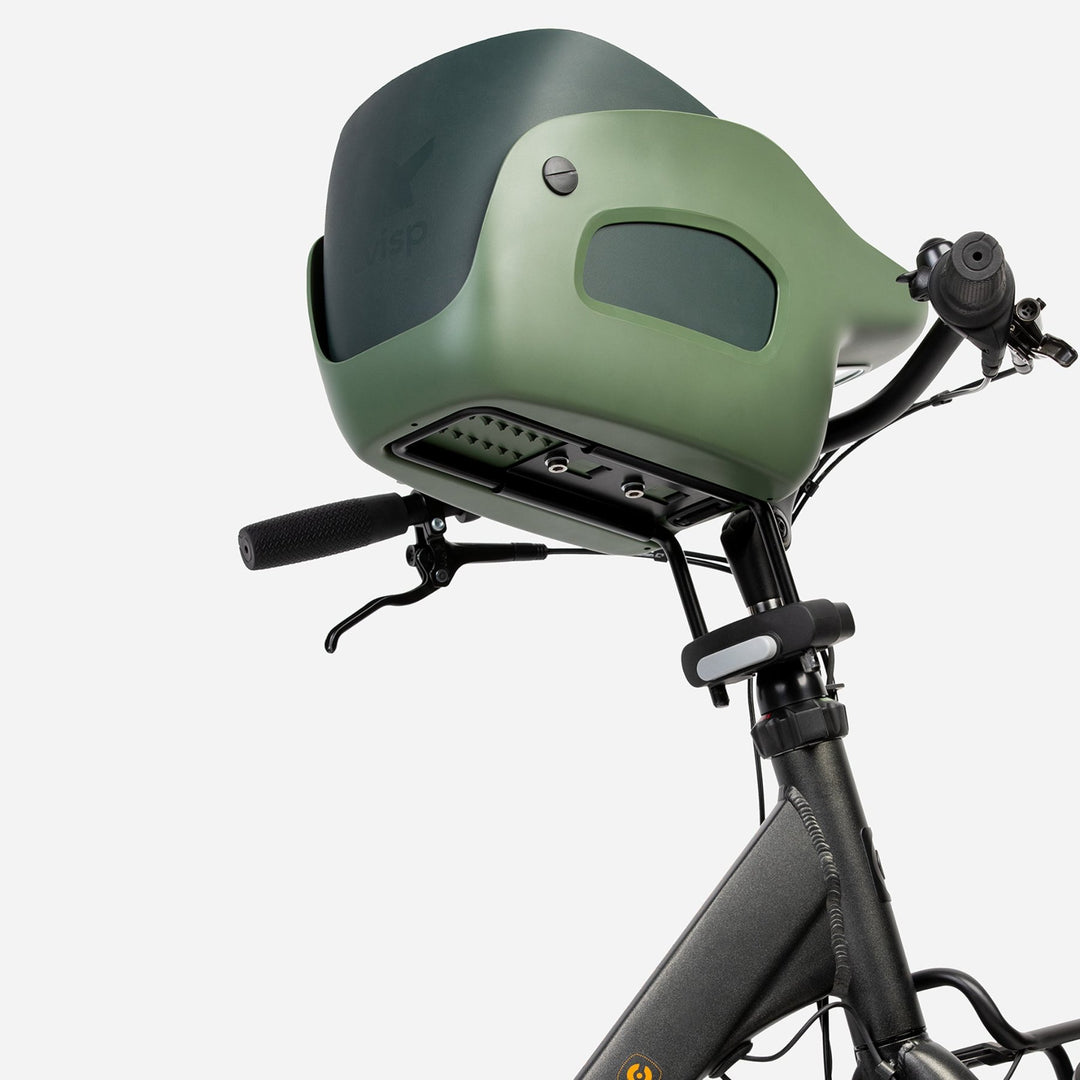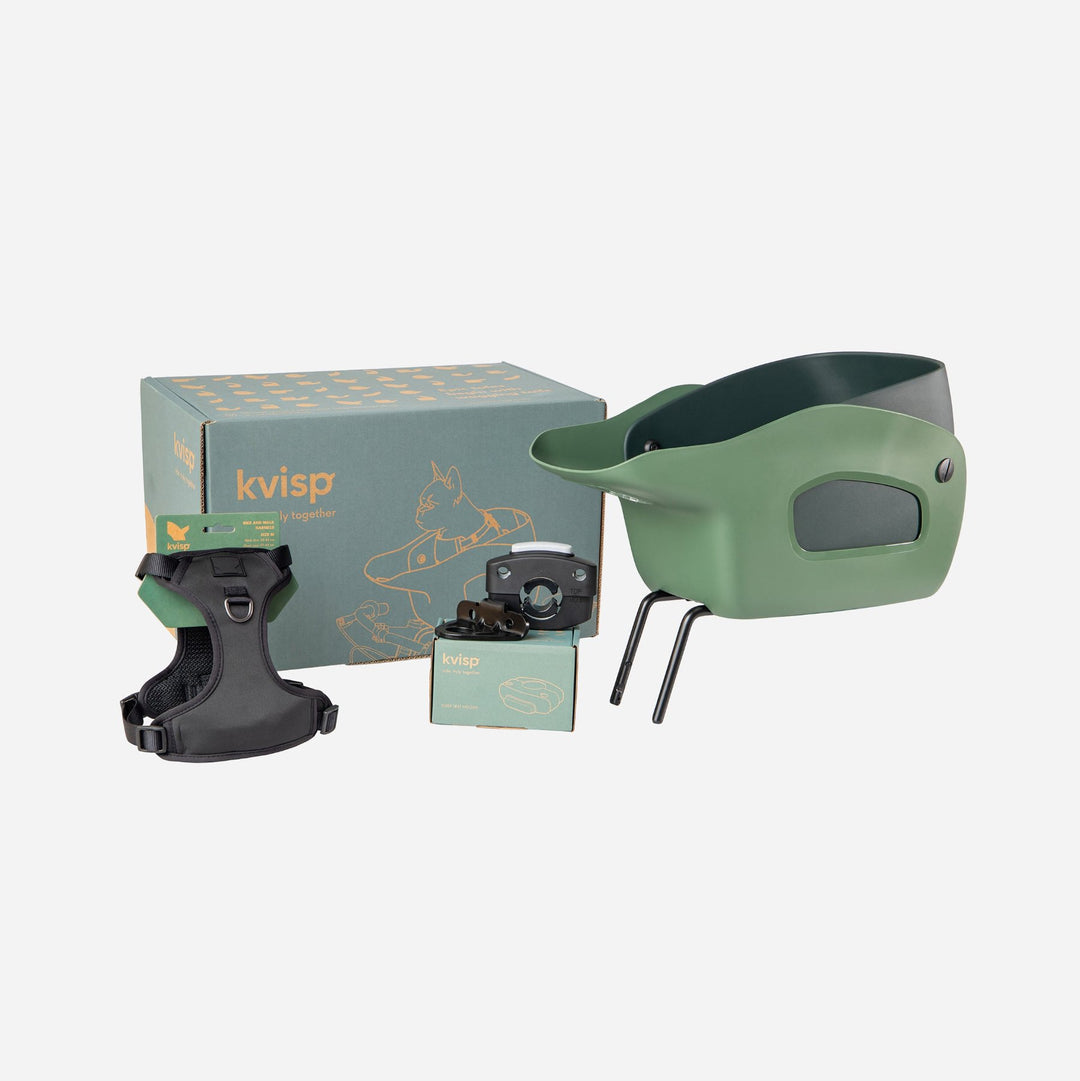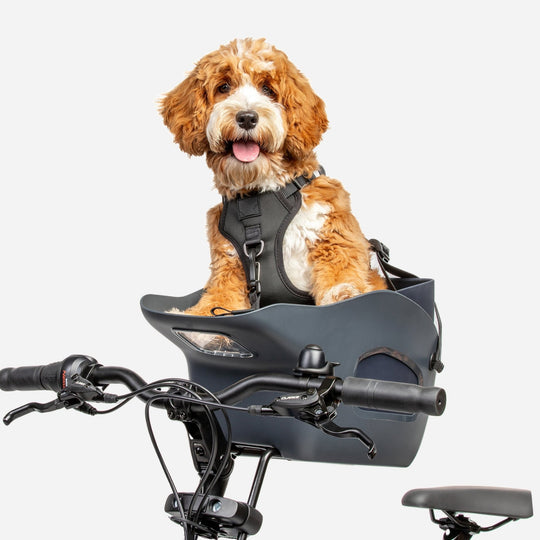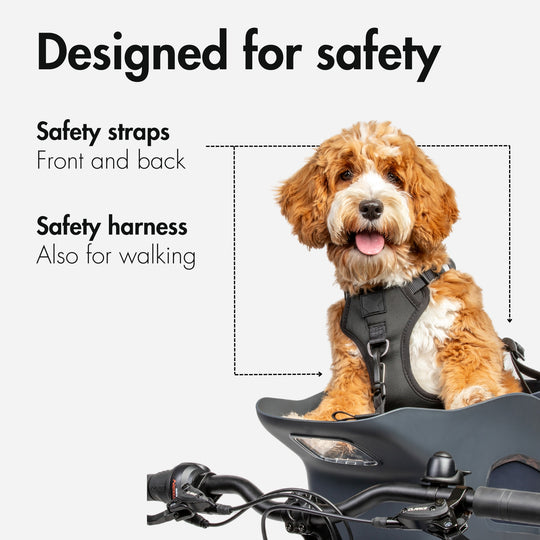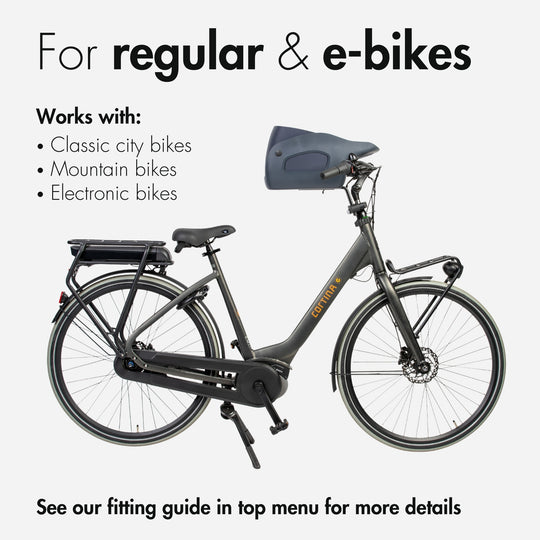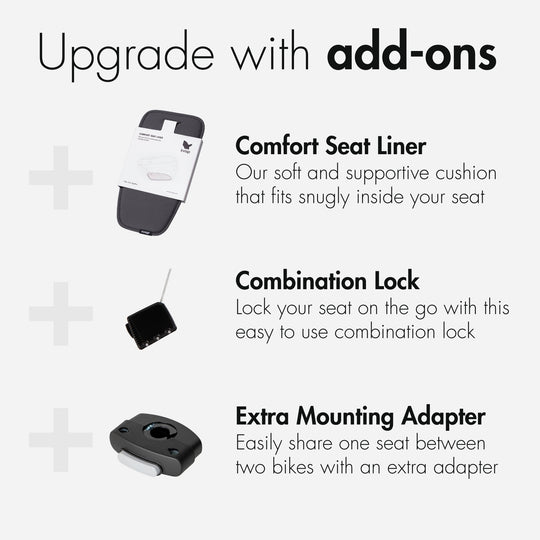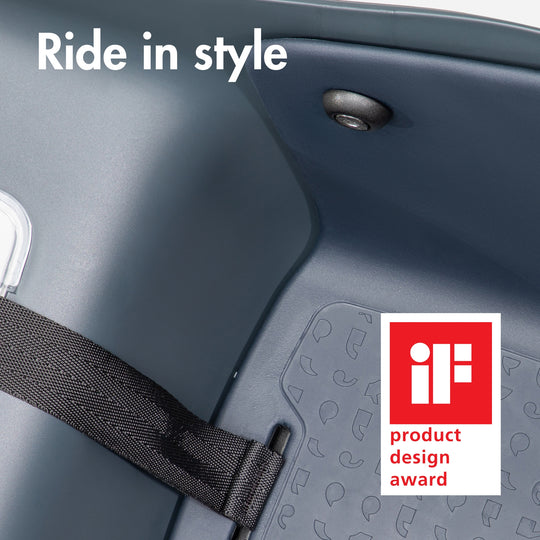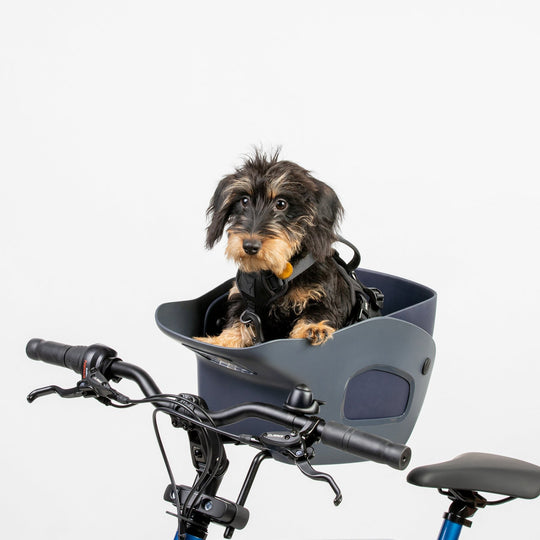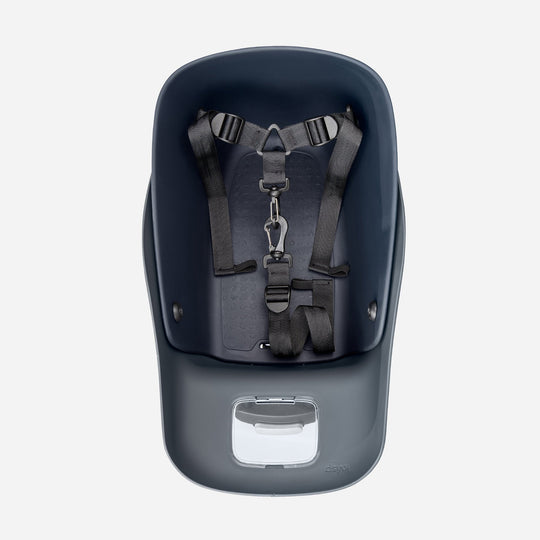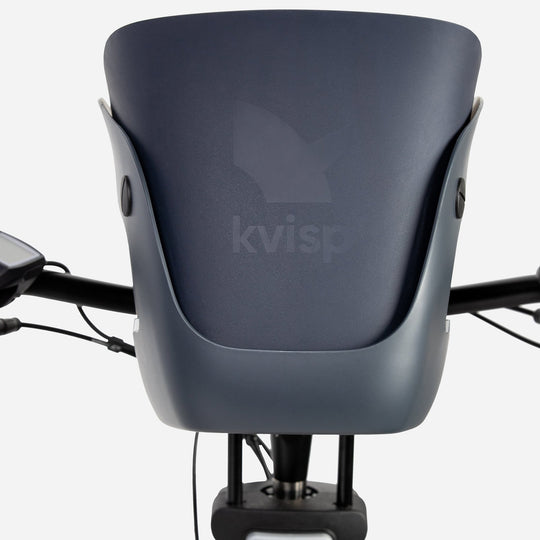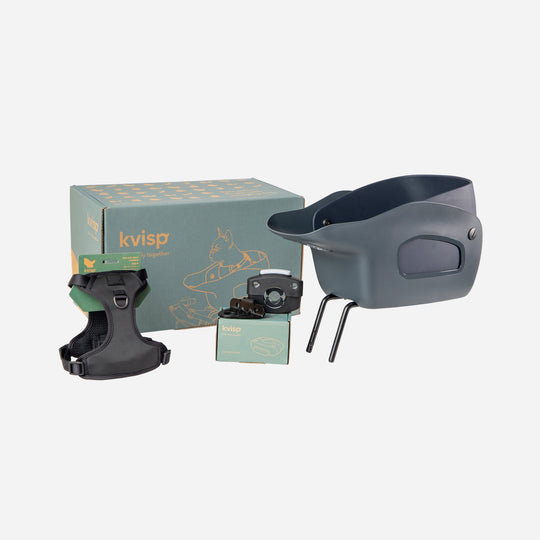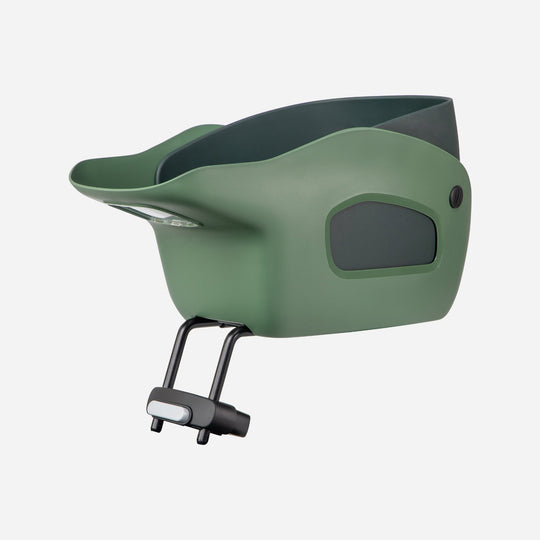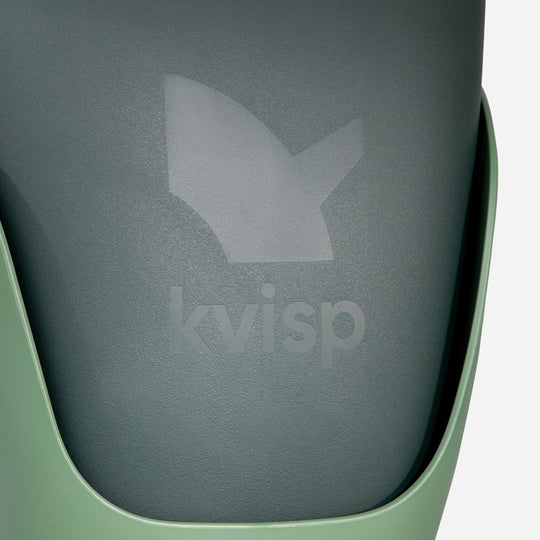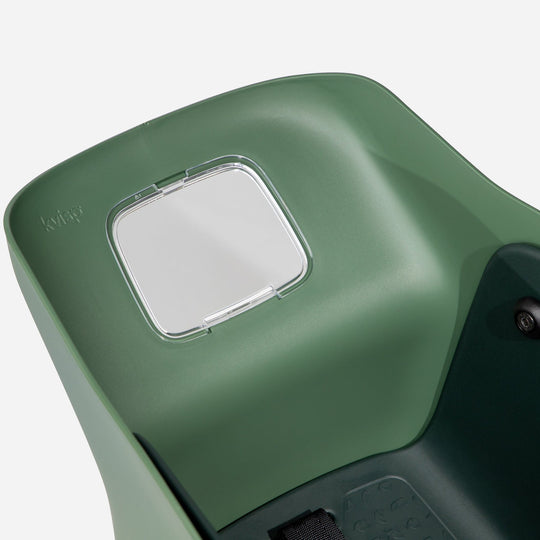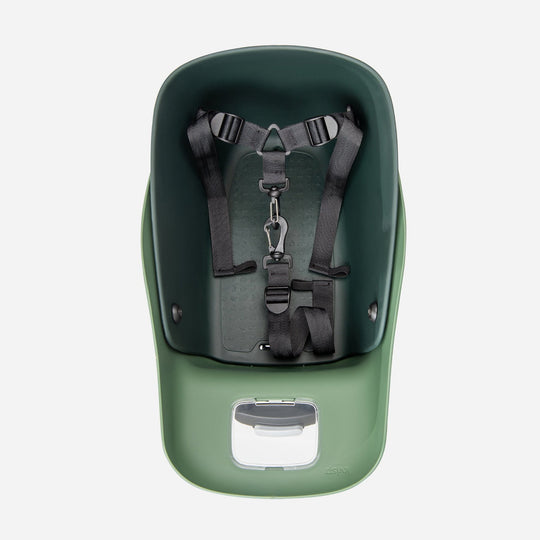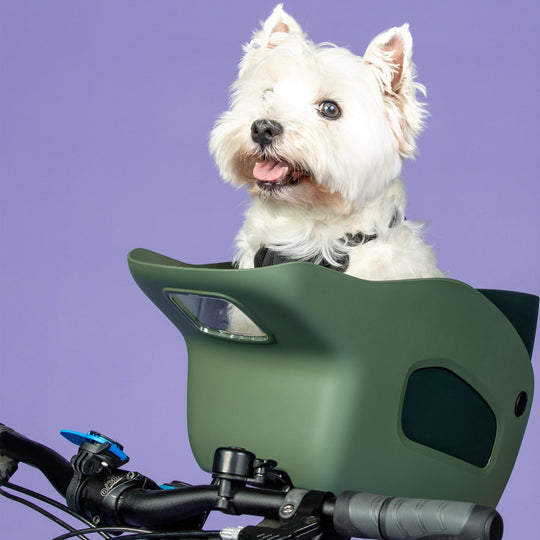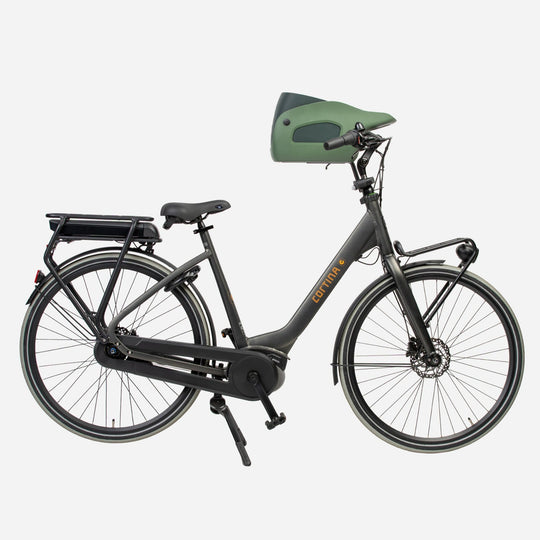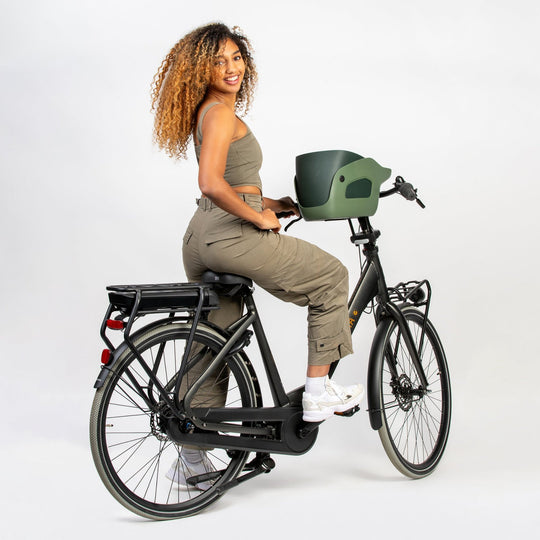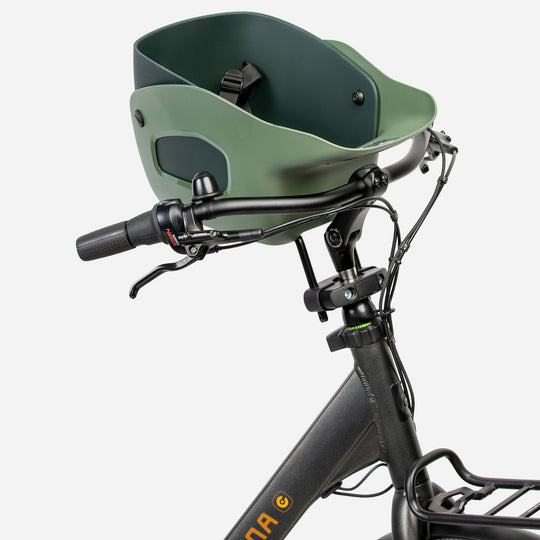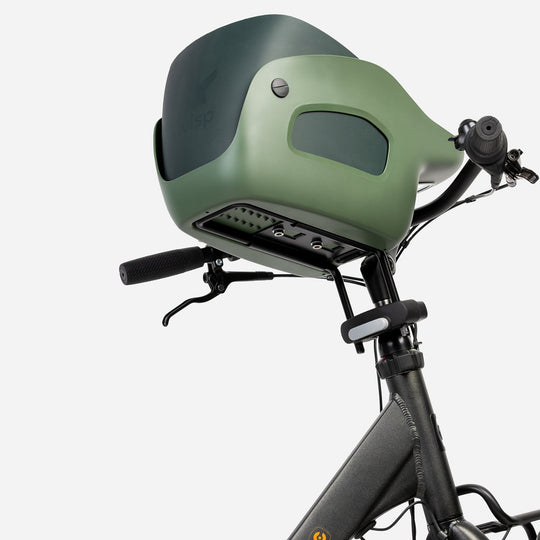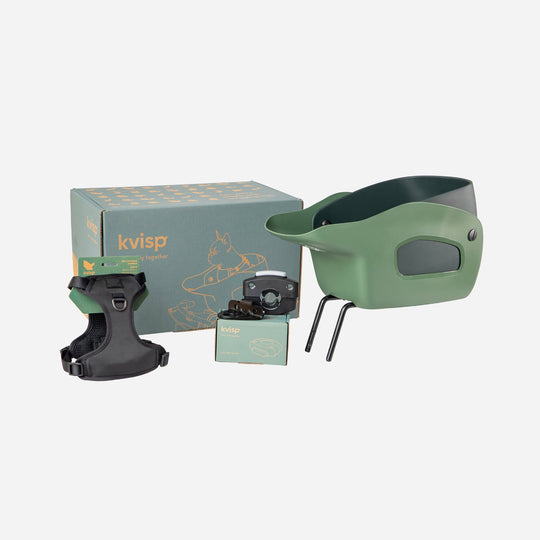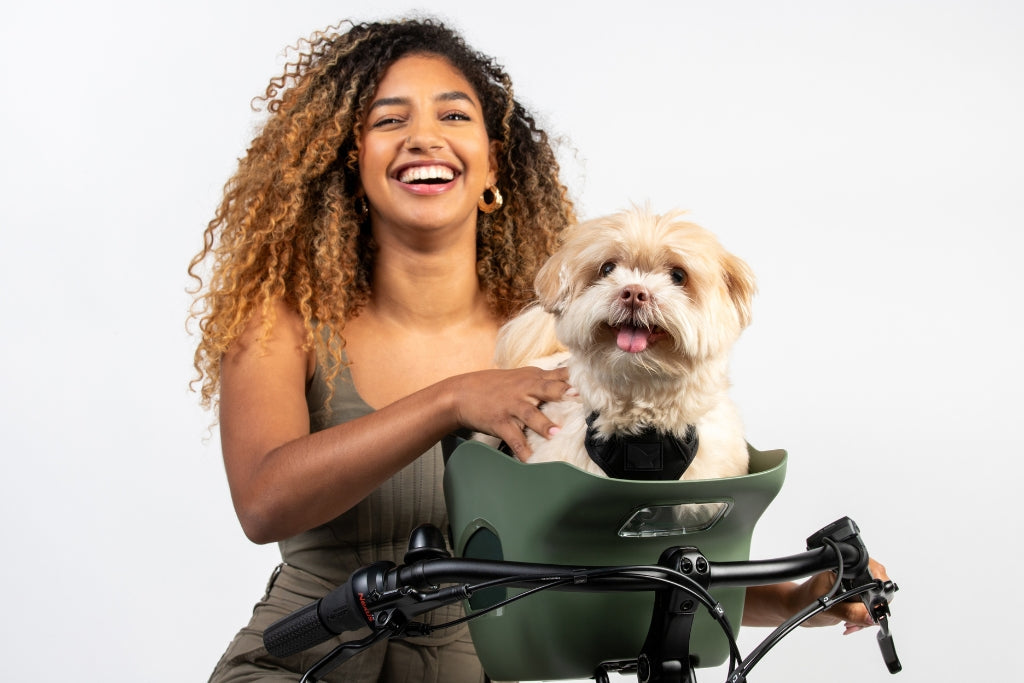Winter Biking with Your Dog: How to Keep Them Warm in a Bike Basket
Biking with your pup in winter can be an incredibly fun and rewarding experience, but cold temperatures present a unique challenge. While some dogs thrive in chilly weather, others might shiver at the mere thought of a frosty breeze. Before heading out, consider the temperature, wind chill, and road conditions. Even if the air seems manageable to you, your dog is lower to the ground, meaning they’ll feel the cold more intensely—especially small breeds with short fur. A good rule of thumb? If it feels too cold for you without gloves, it's likely too cold for your dog without proper protection.

That doesn’t mean winter biking is off-limits! With the right precautions, you can keep your pup cozy and safe while enjoying the crisp, fresh air together. Start with short rides to gauge their comfort level. If they seem eager and relaxed, you’re on the right track! However, if they tuck their tail, shiver, or try to burrow into the basket, it’s a sign they need more warmth. A small dog bicycle carrier with proper insulation can make all the difference, shielding them from the wind while keeping them securely in place.
Understanding Your Dog’s Cold Tolerance
Not all dogs handle the cold the same way. Some breeds, like Huskies or Malamutes, are built for snow and can happily enjoy long winter outings. Others, especially small breeds like Chihuahuas or Italian Greyhounds, struggle to retain body heat and may need extra layers to stay comfortable. Coat thickness, body fat percentage, age, and health all play a role in determining how much cold your pup can handle. If your dog is small, has a short coat, or is a senior, they’ll likely need more protection to stay warm.
Watch for signs that your dog is feeling too cold:
👉 Shivering or curling up tightly – This is a clear indicator they need more warmth.
👉 Lifting paws frequently – Snow and ice can cause discomfort or even frostbite.
👉 Whining, slowing down, or seeking shelter – If your dog seems uneasy, they might be struggling with the temperature.
👉 Cold ears and paws – If their extremities are chilly to the touch, it’s time to warm them up.
Knowing your dog’s limits will help you plan your ride accordingly. If your pup is more sensitive to cold, consider shortening your trips, adding extra insulation to their carrier, or investing in a windproof cover.
Choosing the Right Bike Basket for Winter Biking
A winter-friendly small dog bicycle carrier is more than just a basket—it’s your pup’s cozy haven on chilly rides! Not all bike carriers are designed for winter conditions, so selecting one that provides warmth, security, and comfort is key. An open basket may not be enough to shield them from harsh winds, and a poorly designed carrier could make them feel exposed or unstable.
Here’s what to look for when choosing a winter-ready carrier:
➡️ Sturdy and secure design – Your dog needs to feel safe and stable, especially if you hit a bump.
➡️ Insulated or enclosed options – A carrier with padded sides or a weatherproof cover can help retain warmth.
➡️ Breathable but wind-resistant fabric – You want airflow, but not an icy draft!
➡️ Proper attachment to your bike – A wobbly carrier makes for an uncomfortable (and unsafe) ride.
➡️ Enough space for layering – A slightly roomier basket lets you add a comfy liner or blanket.
A high-quality small dog bicycle carrier designed with winter in mind will not only make your dog more comfortable but will also give you peace of mind, knowing they’re protected from the elements.
Dressing Your Dog for Cold Weather Rides
Think of your pup’s winter outfit as their first layer of defense against the cold! While some dogs are fine with just their natural coat, others benefit from extra insulation. A snug-fitting sweater or jacket can help trap body heat, keeping them toasty even as the temperature drops. When picking out winterwear, go for materials like fleece or wool that provide warmth without being too heavy.
Key winter gear for biking with your dog:
➡️ A well-fitted dog coat – Look for one that covers their belly for maximum warmth.
➡️ Booties or paw protectors – Snow and road salt can be harsh on sensitive paw pads.
➡️ A neck gaiter or snood – Keeps cold air from creeping in around their ears and neck.
➡️ Layering strategy – If it’s extra cold, double up with a lightweight base layer.
If your dog isn’t used to wearing clothes, introduce winter gear gradually. Let them wear it indoors for short periods before taking them outside. If they seem comfortable, you’re good to go!
The Role of Insulation: Keeping Your Dog Comfortable
Even the coziest winter jacket won’t be enough if your dog is sitting in a cold, hard basket for an extended ride. Proper insulation inside the carrier is just as important as dressing them warmly! Imagine sitting on a metal bench in freezing weather—it wouldn’t take long before the cold seeped through. The same applies to your dog’s bike basket. Without a soft, insulated layer, they’ll lose body heat fast.
Some easy ways to insulate their carrier include:
✔️ Adding a padded liner – A fleece or foam insert can provide extra warmth and cushion.
✔️ Using a thick blanket – Tuck a soft, warm blanket around them for added comfort.
✔️ Opting for a windproof cover – This helps block cold gusts without trapping moisture.
✔️ Choosing a carrier with enclosed sides – Less exposure to open air means better heat retention.
A well-insulated small dog bicycle carrier makes winter biking much more enjoyable for your pup. For an extra layer of warmth, a comfort seat liner can be a game-changer—it adds plush padding while keeping the carrier cozy even on chilly rides.
Protecting Your Dog from Cold Winds and Moisture
Wind chill can make a seemingly mild winter day feel significantly colder, especially when cycling at higher speeds. Your pup doesn’t have the same ability to generate heat as you do while pedaling, so shielding them from biting winds is crucial. Without protection, the cold air can cut right through their fur, making them uncomfortable—or worse, putting them at risk for hypothermia.
Here’s how to keep your dog protected:
👉 Use a wind-resistant cover – A partial or full cover can help reduce wind exposure.
👉 Choose a carrier with high sides – This creates a natural barrier against chilly gusts.
👉 Waterproofing is essential – If there’s snow or light rain, a water-resistant liner or cover keeps them dry.
👉 Limit exposure time – Plan shorter rides when the wind chill is intense.
If your dog is prone to getting chilly quickly, adding a Comfort Seat Liner can offer additional warmth and protection. A well-insulated, wind-resistant setup will make winter biking a fun experience instead of a freezing one!

Ensuring Proper Ventilation in an Enclosed Carrier
Keeping your pup warm in winter is a priority, but that doesn’t mean sealing them inside a stuffy, air-tight space. A fully enclosed carrier might sound like a great idea for shielding them from the cold, but without proper ventilation, it can cause discomfort or even overheating. Dogs regulate their body temperature differently than humans, and while they may start a ride feeling chilly, they can quickly warm up—especially in a well-insulated small dog bicycle carrier.
To strike the perfect balance between warmth and breathability, look for:
➡️ Mesh or vented panels – These allow airflow without exposing your dog to harsh winds.
➡️ A partially enclosed carrier – Provides protection while preventing excessive heat buildup.
➡️ Adjustable covers – Some carriers let you control how much air circulates inside.
➡️ Breathable bedding – Materials like fleece trap warmth but still allow airflow.
If your dog starts panting heavily, it could mean they’re too warm, even in cold weather. Always check on them during rides and adjust ventilation as needed. The goal is to create a cozy space that keeps out the cold while still allowing fresh air to circulate.
Keeping Your Dog Secure on Slippery Roads
Winter biking isn’t just about keeping your pup warm—it’s also about ensuring a smooth and safe ride. Snow, ice, and wet roads can make cycling more challenging, increasing the risk of slips and sudden jolts. The last thing you want is for your dog to feel unstable in their carrier, as sudden movements could make them anxious or uncomfortable.
To keep your pup safe and secure, consider:
✔️ A stable, well-mounted carrier – Avoid flimsy baskets that wobble or shift.
✔️ Non-slip padding inside the carrier – Helps prevent sliding when turning or braking.
✔️ Even weight distribution – A front-mounted basket can offer better control in winter conditions.
✔️ Adjusting your riding style – Slow down, take turns gently, and avoid sudden stops.
A high-quality small dog bicycle carrier with secure straps and a non-slip liner can make a huge difference in stability. If you’re riding in icy conditions, reducing your speed and being extra cautious will help keep both you and your furry passenger safe.
The Kvisp Dog Bike Carrier: A Winter-Ready Choice
Not all bike carriers are built with winter riding in mind, but having the right one can transform your cold-weather adventures. The Kvisp Dog Bike Carrier offers a comfortable, secure, and well-insulated space for your pup, making it a great choice for winter biking. Unlike open wire baskets that leave your dog exposed to wind and cold, this carrier provides a cozy, protective enclosure while still allowing them to enjoy the ride.

Why the Kvisp Carrier is a must-have for winter biking:
✅ Secure and stable design – No shifting or wobbling, even on uneven roads.
✅ Comfortable padding – Helps keep your dog warm and cozy.
✅ Breathable yet insulated – Maintains warmth without trapping excessive heat.
✅ Perfect fit for small breeds – Designed with smaller dogs in mind, ensuring a snug and comfy ride.
Pairing it with a comfort seat liner adds even more warmth and cushioning, making winter outings an enjoyable experience for both you and your pup. A secure and well-padded carrier ensures your dog stays comfortable, no matter how chilly it gets outside.
Hydration and Nutrition for Cold-Weather Rides
It’s easy to forget about hydration in winter, but staying properly hydrated is just as important in cold weather as it is in summer. Cold air can be deceptively drying, and dogs lose moisture through panting—even when it’s chilly. Plus, they burn more calories trying to stay warm, so providing the right nutrition before and after your ride helps them maintain their energy levels.
Key hydration and nutrition tips:
✔️ Offer water regularly – Bring a small, insulated bottle to prevent freezing.
✔️ Pack high-energy treats – Protein-rich snacks help keep them warm from the inside out.
✔️ Feed them a light meal before a ride – An empty stomach can lead to low energy, but too much food may cause discomfort.
✔️ Monitor their energy levels – If they seem sluggish or uninterested in the ride, they may need extra fuel.
Carrying a collapsible water bowl makes it easy to give them a drink during breaks. If you’re planning a longer ride, bringing a few nutrient-dense treats ensures they stay energized and happy throughout the trip.
Post-Ride Care: Warming Up After a Winter Bike Ride
Once you’ve finished your ride, don’t just bring your pup inside and assume they’re fine—warming up properly is key to keeping them healthy and comfortable. Even if they seemed cozy during the ride, their paws, ears, and nose may have been exposed to the cold for longer than you realize. Sudden temperature changes can be tough on their body, so take a few steps to help them transition from the cold back to a warm indoor space.
👉 Check their paws – Remove any ice, salt, or moisture buildup.
👉 Dry off their fur – If they got wet, use a warm towel to prevent chills.
👉 Offer a warm, cozy spot to rest – A soft blanket or heated pet bed can help them relax.
👉 Monitor for signs of cold stress – If they seem lethargic or are shivering, help them warm up gradually.
Giving them a treat or warm water can also be comforting after a chilly ride. Ensuring they wind down in a warm, calm environment will keep them happy and ready for their next biking adventure!
Making Winter Biking with Your Dog Enjoyable All Season Long
With the right preparation, winter biking with your dog can be a fantastic experience! Instead of dreading the cold, embrace it as an opportunity for fresh-air adventures with your furry companion. Small adjustments—like choosing the right small dog bicycle carrier, dressing your pup appropriately, and ensuring their comfort—can make all the difference in keeping them warm and happy.
➡️ Adjust ride length based on the weather – Some days are better suited for shorter trips.
➡️ Listen to your dog’s signals – If they seem uncomfortable, make modifications.
➡️ Invest in the right gear – A cozy carrier and the right accessories can enhance the experience.
➡️ Enjoy the season together! – Winter biking can be just as fun as summer rides with a little extra planning.
By taking these steps, you’ll create lasting memories while keeping your dog safe and comfortable. Winter shouldn’t stop you from enjoying your favorite outdoor activities—it just requires a little extra care and preparation. Bundle up, grab your gear, and get ready to hit the road with your pup!






